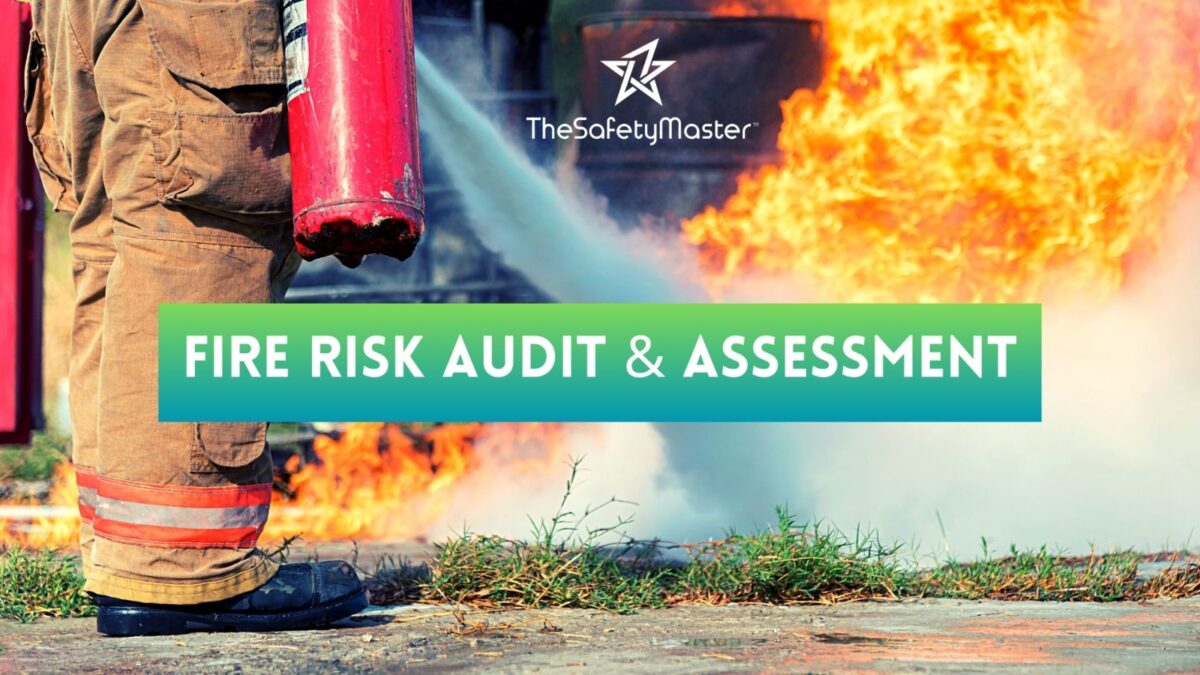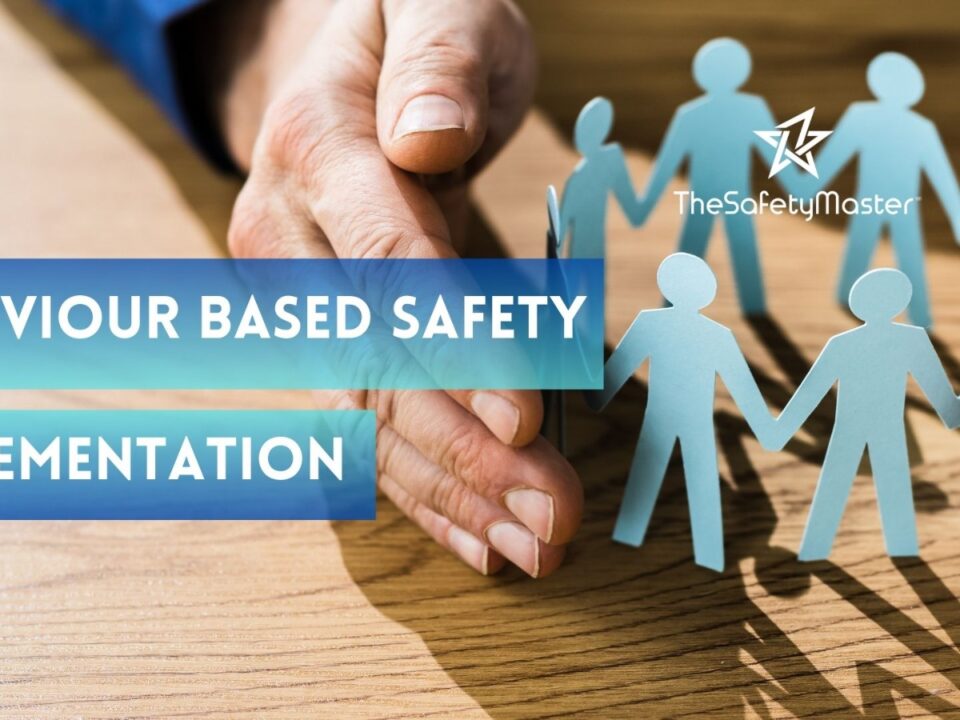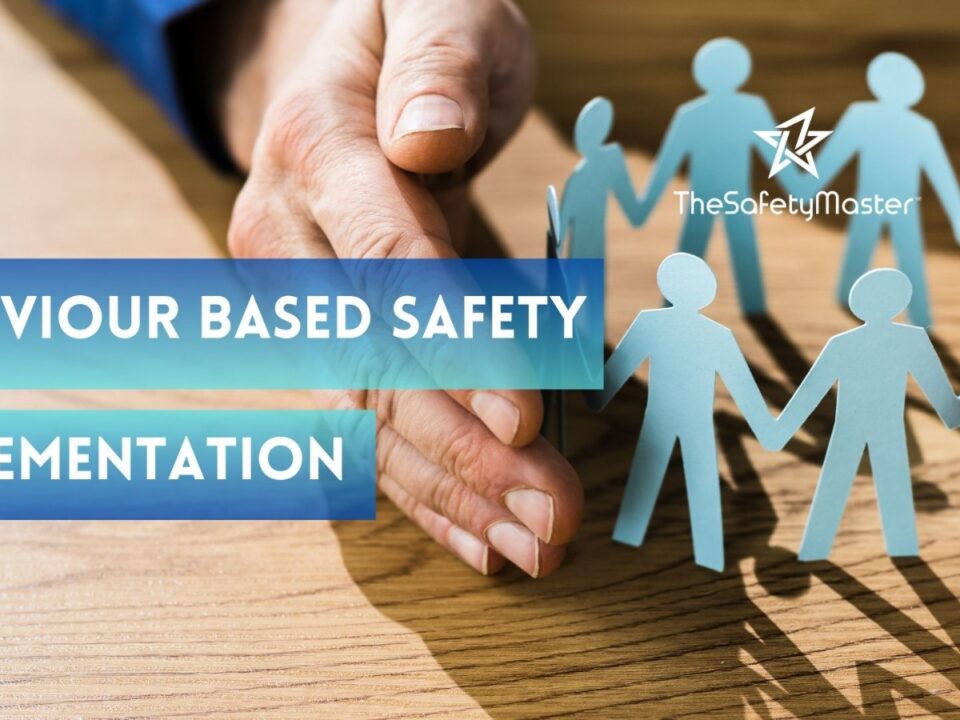Unveiling the Hidden Fire Hazards – How Regular Audits and Assessments Can Save Businesses

How HIRA Study & Implementation Revolutionizes Safety Practices in Indian Industries
March 10, 2025
A Step Towards Sustainable Growth: How Safety Audits Foster Industry Development in India
March 13, 2025In this article, we delve into the importance of uncovering hidden fire hazards within businesses and how regular audits and assessments can be a life-saving practice. Fire hazards can lurk in unexpected places, posing a significant threat to both employees and property. By shedding light on this issue, we aim to raise awareness among business owners and managers about the urgent need for proactive safety measures. Stay tuned as we explore the common fire risks that often go unnoticed, provide expert advice on conducting thorough audits, and unveil the promising benefits of prioritizing fire safety. Don’t miss out on the valuable insights that await you!
Introduction
In today’s fast-paced and ever-evolving business landscape, the importance of ensuring safety measures within workplaces cannot be overstated. While many businesses prioritize physical security, fire hazards often remain hidden and underestimated. Unforeseen fire incidents can result in devastating consequences, not only causing harm to employees but also leading to significant financial losses for businesses. Therefore, it is imperative for organizations to conduct regular fire safety audits and assessments to identify and mitigate potential risks. In this enlightening article, we will uncover the hidden fire hazards that lurk within businesses and explore how regular audits and assessments can be the key to safeguarding both lives and livelihoods. We will delve into the various aspects of fire safety measures, including identifying potential hazards specific to different environments, conducting thorough risk assessments, implementing effective protocols and procedures, complying with local regulations, and training employees in emergency response
The Importance of Fire Safety Audits and Assessments
In the realm of business, where success is often equated with profitability and growth, it is imperative to acknowledge the crucial role that fire safety audits and assessments play in securing a thriving enterprise. These comprehensive evaluations serve as the bedrock for identifying potential fire hazards lurking within business premises, and ensuring the safety of employees, customers, and valuable assets. By conducting regular audits, businesses can proactively address hidden fire risks that might otherwise go unnoticed until a catastrophic incident occurs. Fire safety audits and assessments are not merely bureaucratic obligations; they are indispensable tools for safeguarding businesses from the devastating consequences of fire incidents. These assessments serve as a proactive approach to risk management, allowing organizations to identify vulnerabilities and implement necessary measures to mitigate potential hazards. By embracing this diligent approach towards fire safety, companies display their commitment towards fostering a secure environment that values both human life and material assets.
Every business has a unique set of circumstances that can contribute to hidden fire hazards. From outdated electrical wiring systems to improperly stored flammable materials or inadequate maintenance of fire suppression systems – these risks can silently undermine even the most well-established enterprises. By prioritizing regular audits and assessments, businesses gain invaluable insight into potential hazards specific to their operations. This knowledge empowers them to make informed decisions regarding investments in preventive measures such as equipment upgrades or employee training programs tailored to address identified vulnerabilities.
Remember: Fire safety audits are not mere obligatory tasks but powerful tools for fortifying your business against unforeseen calamities. Taking proactive steps today ensures continuity tomorrow – safeguarding lives, protecting assets and nurturing a resilient organizational culture that thrives amidst challenges
Understanding Hidden Fire Hazards in Businesses
Asta-sairo, the enigmatic realm of fire hazards in businesses, veiled in secrecy yet lurking within the very fabric of our work environments. These hidden perils, camouflaged amidst our bustling offices and industrious workshops, pose a constant threat to the safety and livelihoods of businesses worldwide. To truly comprehend their nature is to embark on a journey into the heartland of danger, where seemingly innocuous elements can ignite a catastrophic inferno.In this clandestine domain, combustible materials silently lie in wait, concealing their volatile potential. Flammable chemicals stored unsafely near heat sources, electrical systems burdened beyond their capacity, and haphazardly maintained machinery all contribute to this treacherous landscape. Even the simplest oversights like cluttered pathways and neglected ventilation systems can turn an ordinary workplace into a ticking time bomb.
However, fear not for there lies hope amidst these concealed risks. By unravelling the enigma that shrouds these hidden fire hazards with diligent audits and assessments, businesses gain the power to transform their landscapes into sanctuaries of safety. With meticulous attention to detail and expert analysis, these evaluations uncover weaknesses previously unseen; allowing for proactive measures that extinguish threats before they ignite catastrophic consequences.
So let us venture forth into this clandestine realm together – armed with knowledge and resolve – as we expose these concealed fire hazards that plague businesses worldwide. For within this exploration lies not only risk awareness but also the promise of safer work environments where employees thrive without fear or hindrance.
The Role of Regular Audits in Preventing Fire Incidents
With a perennial commitment to fire safety, businesses must recognize the pivotal role that regular audits play in preventing catastrophic fire incidents. These audits serve as a protective shield, casting their discerning gaze over every nook and cranny of the organization’s premises. By meticulously examining potential fire hazards, such as faulty electrical wiring or inadequate storage practices, audits unveil hidden risks that may otherwise go unnoticed. This rigorous scrutiny allows businesses to take prompt action and implement necessary safeguards before a spark can escalate into a devastating blaze. Regular audits also foster a culture of vigilance within organizations, empowering employees to actively participate in the prevention of fire incidents. Through training programs and awareness campaigns, staff members become well-versed in identifying potential hazards and implementing preventive measures. This proactive approach creates an environment where everyone is equipped with the knowledge and skills to respond swiftly and effectively in case of an emergency. By instilling this sense of responsibility among employees, regular audits not only mitigate fire risks but also cultivate a collective sense of safety and well-being within the organization.
Furthermore, regular audits offer peace of mind to business owners and stakeholders by ensuring compliance with relevant safety regulations. By adhering to local fire codes and industry standards, companies demonstrate their commitment to protecting both their assets and the lives of those who inhabit their premises. Simultaneously, this dedication translates into enhanced reputation management for businesses—conveying an image of reliability, responsibility, and care for the welfare of employees and customers alike. Embracing regular audits as an integral part of their operational framework enables businesses not only to safeguard against potential losses but also reinforces their standing as responsible corporate citizens
Assessing Fire Safety Measures and Equipment
Fire safety measures and the quality of equipment used are fundamental components in safeguarding businesses against potential fire hazards. Effective assessment of these measures ensures that businesses are well-prepared to handle any fire-related emergencies. During the evaluation process, experts meticulously examine various factors, such as the installation and maintenance of fire alarms, sprinkler systems, fire extinguishers, emergency lighting, and evacuation routes. Understanding the intricacies of each safety measure allows auditors to identify potential weaknesses or areas requiring improvement. By thoroughly inspecting and testing equipment functionality, auditors can ensure that businesses possess reliable tools to combat fires promptly. This assessment not only contributes to a safer work environment but also instils confidence among employees that their workplace is well-equipped to handle any unforeseen circumstances.
Moreover, assessing fire safety measures also entails verifying compliance with industry standards and regulations. Auditors meticulously review documents such as maintenance records, training logs for employees responsible for operating firefighting equipment, and certification for service providers. This comprehensive approach guarantees adherence to legal requirements and fosters a culture of compliance within businesses.
By emphasizing continuous evaluation of fire safety measures and equipment, businesses can proactively address any potential issues before they escalate into disastrous situations. Such assessments promote a sense of security among employees while ensuring compliance with regulations set forth by relevant authorities. Ultimately, prioritizing regular evaluations leads to enhanced workplace safety and peace of mind for business owners and employees alike.
Identifying Potential Fire Hazards in Different Business Environments
The diverse nature of business environments presents a rich tapestry of potential fire hazards that often go unnoticed. From offices to restaurants, factories to warehouses, each setting harbours its own unique risks. In the bustling office realm, overloaded electrical outlets and improper storage of flammable materials can ignite disaster. Meanwhile, the sizzling kitchens of restaurants may hide dangers like grease build up near cooking equipment or faulty ventilation systems that can fuel flames. In factories and warehouses, combustible dust accumulation and inadequate fire suppression systems pose significant threats. Exploring these hidden fire hazards in different business environments is crucial for effective prevention strategies. By identifying specific risks associated with each setting, businesses can implement targeted safety measures to mitigate potential disasters. This approach empowers companies to create a secure environment for their employees and customers alike.
By shedding light on these potential dangers, we not only increase awareness but also emphasize the need for proactive action. Through regular audits and assessments that delve into the unique characteristics of various business spaces, we pave the way for safer work environments and inspire confidence in both employees and stakeholders. Taking appropriate measures today ensures a brighter tomorrow where businesses thrive without fear of devastating fires.
Conducting Fire Risk Assessments for Effective Fire Prevention
Conducting Fire Risk Assessments for Effective Fire Prevention: A comprehensive fire risk assessment plays a pivotal role in safeguarding businesses against potential fire hazards. By meticulously evaluating the premises and identifying potential ignition sources, flammable materials, and vulnerable areas, businesses can proactively address fire safety concerns. The assessment typically involves inspecting all areas of the facility, including storage rooms, electrical installations, heating systems, and ventilation systems.
During the assessment, trained professionals meticulously evaluate fire detection and alarm systems to ensure they are fully functional and meet safety standards. They also assess the effectiveness of emergency exits and evacuation routes to guarantee swift evacuation in case of emergencies. Moreover, they examine fire suppression equipment such as sprinkler systems or extinguishers to verify proper maintenance and accessibility.
An optimistic perspective on this process reveals that conducting regular fire risk assessments not only minimizes potential dangers but also instils a sense of confidence among employees. By actively involving staff members in the assessment process and promoting awareness about fire safety measures, businesses cultivate a culture of preparedness and responsibility. Ultimately, this proactive approach ensures that businesses are well-prepared to handle any unforeseen circumstances while fostering a safe working environment for all stakeholders involved.
Training Employees in Fire Safety Protocols and Emergency Procedures
In order to mitigate fire risks and ensure the safety of employees, it is crucial for businesses to provide comprehensive training in fire safety protocols and emergency procedures. By equipping employees with the knowledge and skills necessary to respond swiftly and effectively in case of a fire incident, businesses can significantly reduce potential damages and save lives. Training programs should cover various aspects such as raising awareness about fire hazards, instructing on proper evacuation procedures, demonstrating the correct usage of firefighting equipment, and fostering a culture of proactive fire prevention. Engaging employees through interactive training sessions and practical exercises not only enhances their understanding but also boosts their confidence in handling emergency situations.
Furthermore, empowering employees with fire safety knowledge fosters a sense of collective responsibility within the workplace. By involving all staff members in the prevention and response efforts, businesses can create a cohesive safety culture where everyone contributes to minimizing fire hazards. Ultimately, well-trained employees become an integral part of the larger fire safety strategy, ensuring that businesses are prepared to face any unexpected challenges with resilience and confidence.
Establishing Fire Safety Policies and Procedures
Establishing Fire Safety Policies and Procedures: Creating a robust framework of fire safety policies and procedures is paramount for ensuring the well-being of businesses and their occupants. These guidelines act as a roadmap, guiding employees on how to prevent fires, handle emergencies swiftly, and minimize potential risks. By implementing comprehensive policies, businesses can instil a culture of safety where every individual takes responsibility for fire prevention.
A key aspect of establishing fire safety policies is conducting thorough risk assessments to identify specific hazards unique to the business environment. This allows organizations to tailor their procedures accordingly, addressing vulnerabilities with precision. A well-crafted policy should encompass clear protocols for handling flammable materials, maintaining electrical systems, regular equipment inspections, storing hazardous substances safely, and promoting general awareness among employees.
Effective communication plays an integral role in ensuring that fire safety policies are understood and followed by all members of the organization. Regular training sessions should be conducted to educate employees on evacuation procedures, proper use of firefighting equipment like extinguishers or sprinkler systems, and designated assembly points during emergencies. By combining these elements with regular drills and simulations, businesses can foster a sense of preparedness that empowers individuals to respond confidently in critical situations.
Remember: The implementation of comprehensive fire safety policies not only safeguards live but also enhances productivity by creating peace of mind among employees. When everyone is aware of their roles and responsibilities in preventing fires or responding appropriately during emergencies, businesses thrive in an environment where safety reigns supreme.
Compliance with Local Fire Codes and Regulations
Compliance with Local Fire Codes and Regulations: In order to ensure the utmost safety of businesses, it is imperative that they adhere to local fire codes and regulations. These guidelines are put in place by regulatory authorities with the aim of preventing fire incidents and minimizing risks. By strictly adhering to these codes, businesses create a safe environment not only for their employees but also for customers and visitors.
Local fire codes typically cover various aspects such as building construction materials, occupancy limits, fire alarm systems, emergency exits, sprinkler systems, and fire extinguisher placement. Each region may have its own set of specific requirements that businesses must meet. Compliance with these regulations demonstrates a commitment to safety and significantly reduces the chances of any mishaps occurring.
By diligently following local fire codes and regulations, businesses send a message to their stakeholders that safety is their top priority. This not only fosters trust among employees but also enhances the reputation of the company in the eyes of clients and customers. Moreover, it creates a sense of reassurance within the community that businesses are taking proactive steps to prevent fires. Ultimately, compliance with these rules not only saves lives but also strengthens relationships and instils confidence in everyone involved.
The Cost-Effectiveness of Proactive Fire Safety Measures
Proactive fire safety measures, though requiring initial investments, are undeniably cost-effective in the long run. By implementing a robust fire prevention strategy through regular audits and assessments, businesses can significantly reduce the risk of fire incidents and the subsequent financial losses they entail. Investing in top-quality fire safety equipment, such as smoke detectors, fire extinguishers, and sprinkler systems, can go a long way in mitigating potential damages. These measures not only protect valuable assets but also ensure the safety of employees and customers. Moreover, by adopting preventive measures and continuously reviewing fire safety protocols, businesses can avoid costly disruptions to their operations caused by fires.
Furthermore, proactive fire safety practices contribute to lowering insurance premiums. Insurance providers often offer substantial discounts to businesses that demonstrate their commitment to robust fire prevention strategies. By taking advantage of these incentives, companies can save money while simultaneously safeguarding their premises against potential disasters.
By prioritizing proactive fire safety measures and investing in comprehensive audits and assessments, businesses demonstrate their dedication to protecting both their financial interests and the well-being of their employees and customers. Through these efforts, organizations can cultivate a safe environment that promotes productivity while fostering a sense of security within the workplace. The cost-effectiveness of such practices should not be overlooked as they offer a solid return on investment while providing peace of mind for all stakeholders involved.
The Consequences of Neglecting Fire Safety Audits and Assessments
The Consequences of Neglecting Fire Safety Audits and Assessments: Disregarding the importance of regular fire safety audits and assessments can lead businesses down a treacherous path, fraught with potentially devastating consequences. Failure to conduct these crucial evaluations not only puts the safety and well-being of employees at risk but also jeopardizes a company’s reputation, financial stability, and legal compliance.
Without thorough audits, businesses remain unaware of lurking fire hazards that may silently endanger their premises. Ignoring these risks increases the likelihood of fire outbreaks, resulting in property damage, business interruptions, and potential loss of life. Moreover, such negligence may attract hefty fines or legal actions from regulatory authorities for non-compliance with fire safety codes and regulations.
By neglecting fire safety audits, businesses miss out on an opportunity to demonstrate their commitment to providing a secure environment for employees and customers alike. Conversely, embracing regular assessments showcases proactive measures taken to mitigate risks effectively. By investing in fire prevention strategies through audits and assessments, businesses create a culture of safety that fosters trust among stakeholders while safeguarding their assets from avoidable disasters.
In conclusion, failing to prioritize fire safety audits and assessments can have far-reaching implications for organizations. However, when companies embrace these practices as part of their comprehensive risk management strategy, they demonstrate foresight and dedication to protecting their people and assets. The benefits extend beyond immediate security; they pave the way for sustainable growth by establishing trust among clients, investors, and employees alike—ultimately making the world a safer place one business at a time.
Conclusion
In conclusion, it becomes abundantly clear that fire safety audits and assessments play a paramount role in safeguarding businesses against the lurking threat of fire hazards. By conducting regular audits, identifying hidden risks, and implementing effective prevention measures, businesses can significantly reduce the likelihood of devastating fire incidents. It is through the diligent commitment to fire safety protocols that businesses can not only protect their assets, employees, and customers but also instill a sense of security and confidence within their establishments. With each audit and assessment, businesses take one step closer to building a safer tomorrow, where the flames of destruction are extinguished before they even have a chance to ignite.




